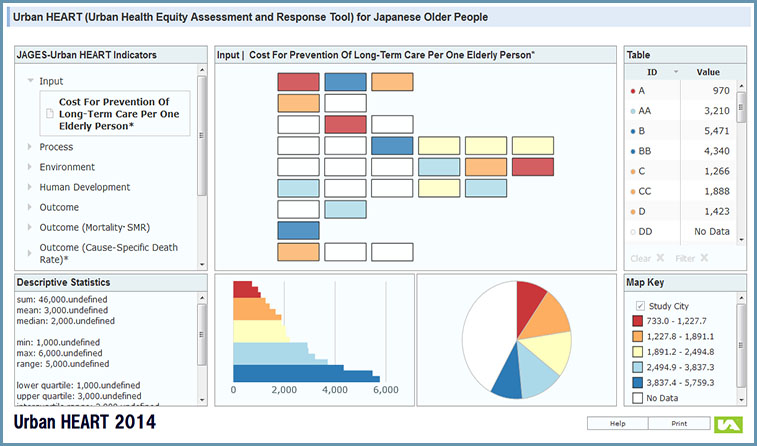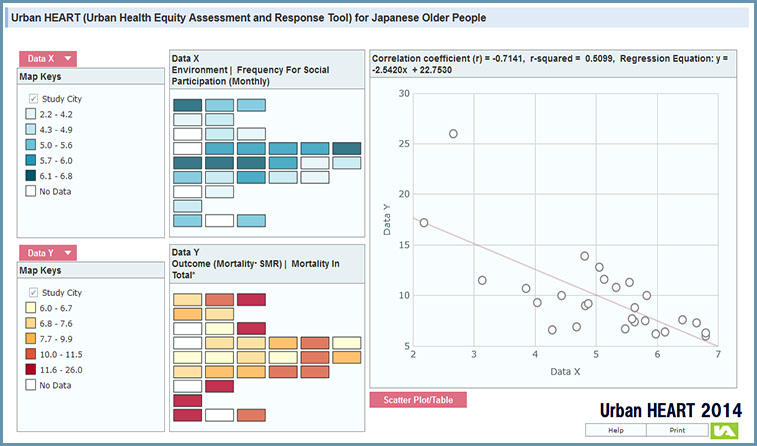Aim
- Aim
- Urban HEART for Japanese Older People is a user-friendly guide for local and national officials to identify health inequities among older people and plan actions to reduce them. Using evidence from WHO's Commission on Social Determinants of Health, Urban HEART encourages policy-makers to develop a holistic approach in tackling health equity.
-


- Click!
- Single map dynamic report
- Double map dynamic report
Methods
- JAGES
- Japan Gerontological Evaluation Study (JAGES) 2010 is a prospective cohort study of community-dwelling, activities of daily living-independent people aged 65 or older, targeting about 200,000 people living in 31 municipalities in Japan (response rate: 66.3%). Information on psychosocial factors and other individual- and community-level factors was collected. In some part of municipalities, vital status and physical and cognitive decline have been followed using data derived from long-term care insurance certification. Geographical information on the study participants was also obtained.
- Development Process of Indicators
-
STEP 1(2010):
We did framework building. We discussed and decided what should be covered and valid for the purpose.
STEP 2(2010):
We selected indicators in view of importance, intervention potential, acceptability, etc.
STEP 3(2010-2011):
We tried calculation of the indicators and narrowed down the indicators in view of ease of data collection.
STEP 4(2011-2012)
Finally, we did refinement of the indicators in view of reliability and validity of indicators, etc.
Results
- Framework
- After the development process of indicators, we also developed a framework to evaluate policies on Japanese Older People.
The framework is composed of 5 elements (1-5) and 2 dimensions (efficiency and Equity).

Figure1 Policy Evaluation Indicators Framework - Calculation of indicators
- As a result, we calculated 22 core indicators and recommended indicators.
At the dynamic report of Instant Atlas in this web site, 22 core indicators are shown with "*" at the end of name. The others are recommended indicators.
The formula of the calculation and the data source are shown in Table 1. Most data were collected by the questionnaire of JAGES 2010 data, and the rests were collected from government open data.
Due to the lack of data for each project cost of long-term-care prevention, we did not calculate the indicators of efficiency. - Table1-22 core indicators (PDF)